Hello,
Welcome to today’s edition of Kitchen Projects. Thank you so much for being here.
Today I have something very special for you: A series of love letters to ingredients written by some of my favourite writers and chefs, filled with words of affirmation (and practical tips and inspiration, of course) in anticipation of Valentine’s Day next week.
Spoiler Alert: mine is about Black sesame. And over on KP+ I’m sharing the recipe for black sesame and yuzu milk buns of dreams. Click here to make them.
What’s KP+? Well, it’s the level-up version of this newsletter. By joining KP+, you will support the writing and research that goes into the newsletter (including the commissioning - and fair payment - of all the writers), join a growing community, access extra content (inc., the entire archive) and more. Subscribing is easy and only costs £6 per month or just £50 per year (£4.10 per month). Why not give it a go? Come and join the gang!
Love,
Nicola
P.S. I’ve written a book! SIFT: The Elements of Great Baking out in May and it’s available to pre-order now. Across 350 pages, I'll guide you through the fundamentals of baking and pastry through in-depth reference sections and well over 100 tried & tested recipes with stunning photography and incredible design. SIFT is the book I wish I'd had when I first started baking and I can’t wait to show you more.
Love is in the air
This weekend is an embarrassment of riches when it comes to ‘holidays’. I was pulled in three directions: Lunar New Year, Valentine’s Day AND Pancake Day all landing within a few days of each other. So very exciting. And confusing. How am I supposed to pay homage to these three great eating events?!
I know the quote goes ‘If music be the food of love, play on.’ But this week, I’d like to suggest a brief amendment: ‘Food is the food of love. Eat on.’ Ok, I know, it’s not exactly an improvement, but it rings true - my greatest memories and experiences are often underpinned with the food I was sharing and enjoying in the moment: Eating flaming hot cheetos on a road trip from California to Las Vegas to see Britney Spears, to making scrambled eggs together in giddy, first weekend-aways, to gorgonzola dolce eaten on an impromptu beach picnic when the sun surprised us, to the chicken Milanese my mum would always make when I needed cheering up.
There are also the relationships we have with particular ingredients, too. Sometimes food doesn’t set the scene, but instead is the entire focus: Commiserating Haribos with a friend, unflashy porridge eaten when you have a big day ahead and you need a breakfast you can trust, to that first, great tomato or strawberry of the year, we’re so lucky to have these constant, micro interactions with the world reflecting back at us through what we choose to eat.
In celebration of that, and in the spirit of Valentine’s Day, I’ve asked some of my favourite writers and pastry chefs to write a love letter to an ingredient. I’m thrilled to welcome Rose Wilde (pastry chef and author of Bread & Roses), Sarah Johnson (head of development for Spring and author of Fruitful, published this April - pre-order now!), Clodagh Manning (Pastry Chef at Lyles) and Marie Havnø Frank (Copenhagen based pastry chef and consultant) to share their words of affirmation along side me this week.
From eggs to vinegar, sweet wine to pomegranate to black sesame.. let’s do it, let’s fall in love!
Black Sesame
By Nicola Lamb
I don’t mean to be dramatic, but I don’t remember who I was before I loved black sesame. Which is odd to say, because I discovered it quite late in life. Sure, I knew sesame seeds came in two colours, but my exposure was limited. Until one day in 2013, in a random pink fluorescent lit diner in Kowloon, I ordered crispy buns. Thick and toasty, one came spread with condensed milk and the other with black sesame paste. It was a revelation - the nuttiness was grounded by a rich earthiness, like sweet dirt, with a mischievous jet-black shine.
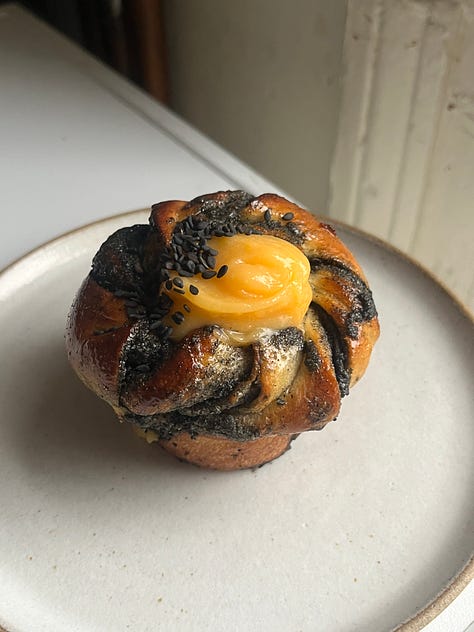
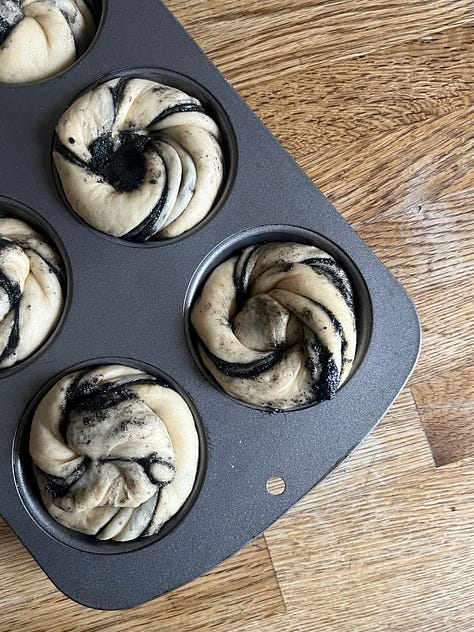

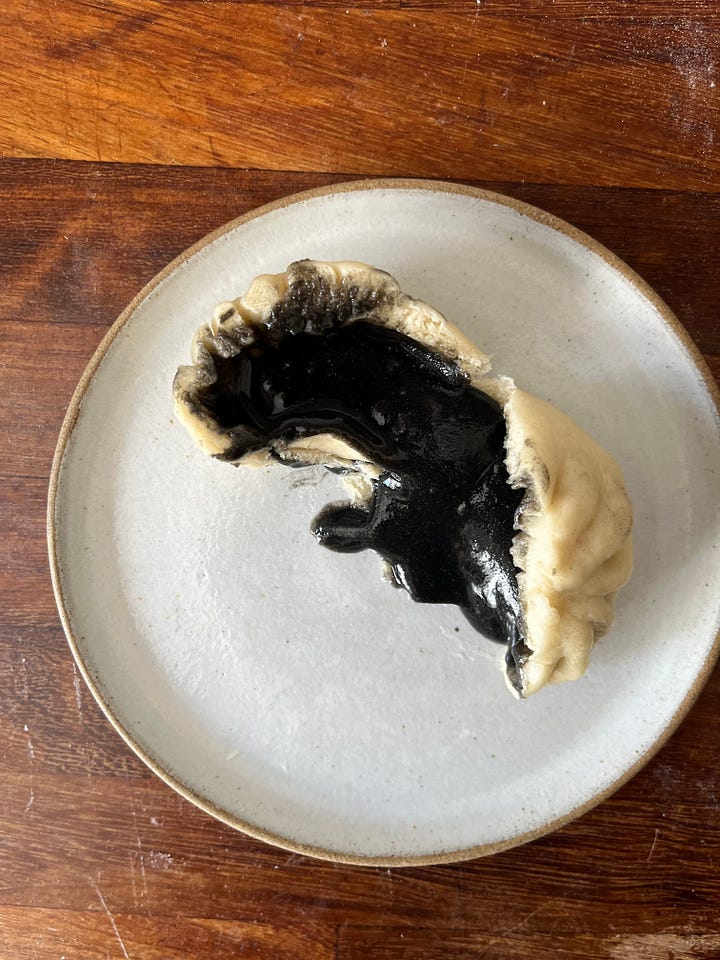

The matchmaking diner is, tragically, now closed. And on my return visits to Hong Kong, I’ve not encountered the black sesame, condensed milk breakfast combination at any other diners or cha chaan tengs. So was this a one-off chance meeting fate, the kind only befitting one true love? I think it so.
I fell fast into a heart-beat-racing-write-their-name-over-and-over-in-your-journal kind of infatuation with black sesame. The flavour, revelatory. The visuals? My gosh: The striking, gothic hue appealed to my former eyelined teenage self. Like a darkly baked croissant or tenderly burnt crusted loaf, the bold colour calls to me. And unlike some dramatically coloured foods, the visuals of the black sesame paste writes a cheque that the flavour actually cashes. If you need any more convincing of my love for these seeds, just look at my ‘Black Sesame’ playlist from 3 years ago, which features songs like ‘Dangerously in Love’ and ‘If I Ain’t Got You’. Unhinged.
Though tahini is ubiquitous these days, black sesame paste - or black tahini - can be harder to track down in reasonable sizes (you can always find smaller jars online, though, if you are organised) and the readily available Belazu one has been discontinued. I’ve made many trips to various Asian supermarkets to find ready-made paste, only to leave empty-handed. Well, not exactly empty-handed - I usually relent and pick up a bulk pack of the raw black seeds. But making your own smooth paste in a blender is not for the faint of heart and will take courage and a little risk. Come to think of it, black sesame paste actually has a lot in common with various crushes I’ve had over the years - elusive, frustrating and utterly addicting.
So, how do you use it? I’ve professed my love for black sesame before in this newsletter, including how to make your own, using it in ice cream, choux, and gooey-centred bao. I strongly encourage you to track down auspicious Tang Yuan, the classic dessert soup with glutinous rice dumplings with rich, melting black sesame middles (which should be fairly easy to find due to the Lunar New Year - Kung Hei Fat Choi everyone), or crispy Jian dui, there is so much inspiration to be found: You can add it to custards, buttercreams, cake batters and shortbreads to create new textures, colours and flavours, or drizzle it between cake layers for a rich, nutty hit - any recipe that calls for tahini will be a simple 1:1 swap.
The raw seeds, of course, are gorgeous, added to crumbles and bread or used as a seedy garnish. And no matter where you use it, I appreciate its two-for-one quality, improving both flavour and visuals. So the meme goes, ‘get yourself a partner that can do both’? In black sesame, I’m glad to say we do.
On KP+ today, in the spirit of Valentine’s Day, three of my favourite things ever are throupling and thriving: Black sesame, Yuzu and Milk Bread. You definitely want to make these.
Get the recipe for my black sesame and yuzu curd milk buns over on KP+ now.
Eggs
By Rose Wilde
How do you measure love? For as long as I can remember, the love I have known has been measured in the cracking of eggs. Growing up, any special day started with eggs and my mom in the kitchen. I remember late mornings on my tip toes peering over the counter to count the growing stack of Swedish pancakes covered in a delicate lace of brown from the sizzling butter on the griddle. Or simple dinners of rice cooked slowly with fennel seed, juniper and black pepper, nestling slices of avocado with crunchy salt and crowned with runny eggs with the crispiest edges. This was my favourite meal. No one fried an egg like my mother, full of texture on the rim, but the yolk kept soft so it would burst with nature's perfect sauce over everything.

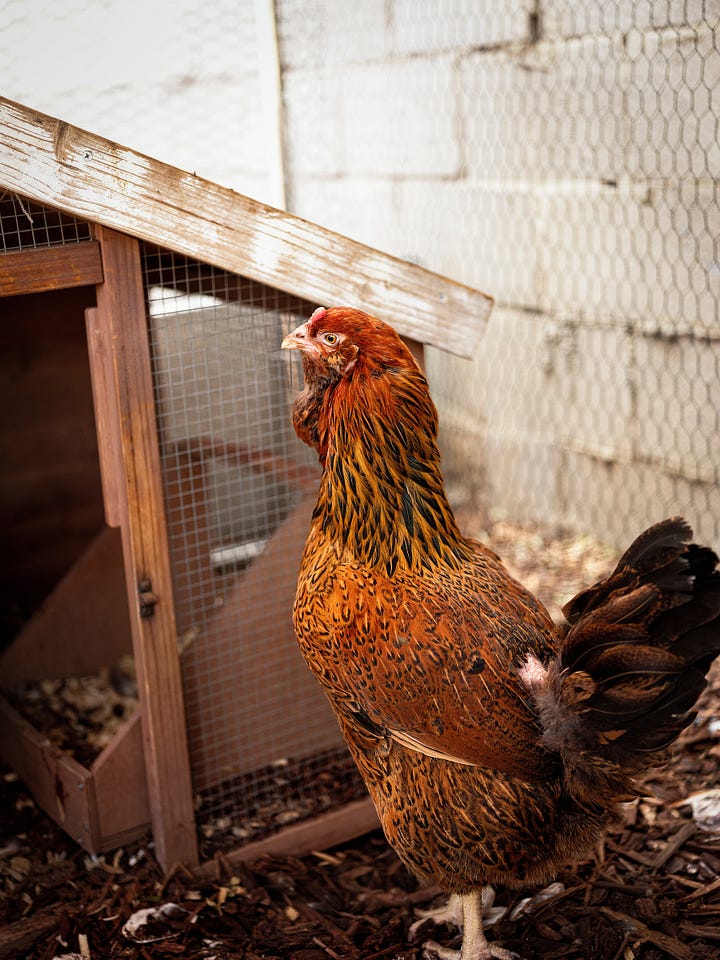
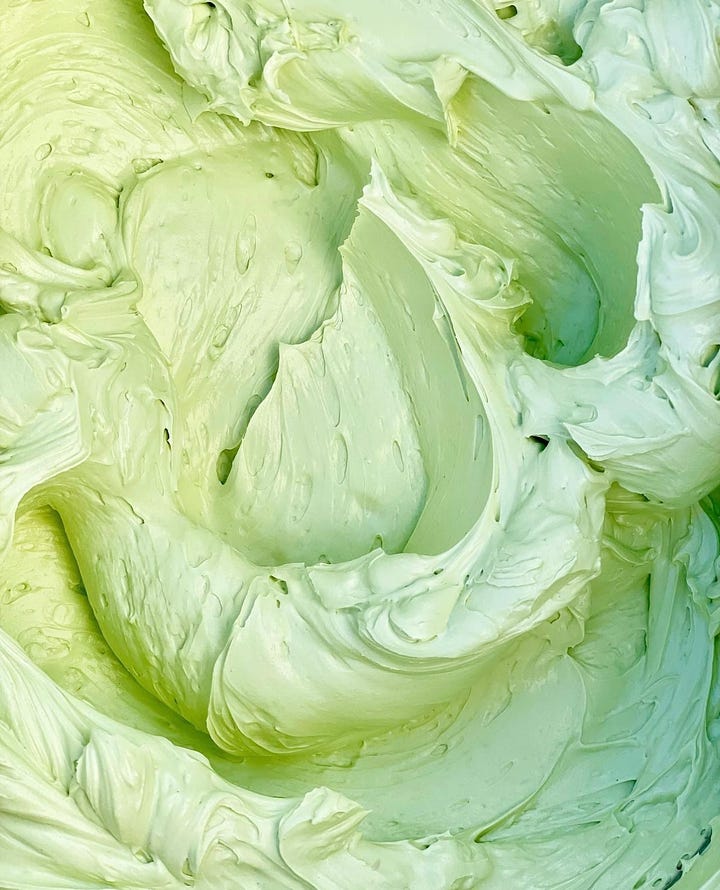
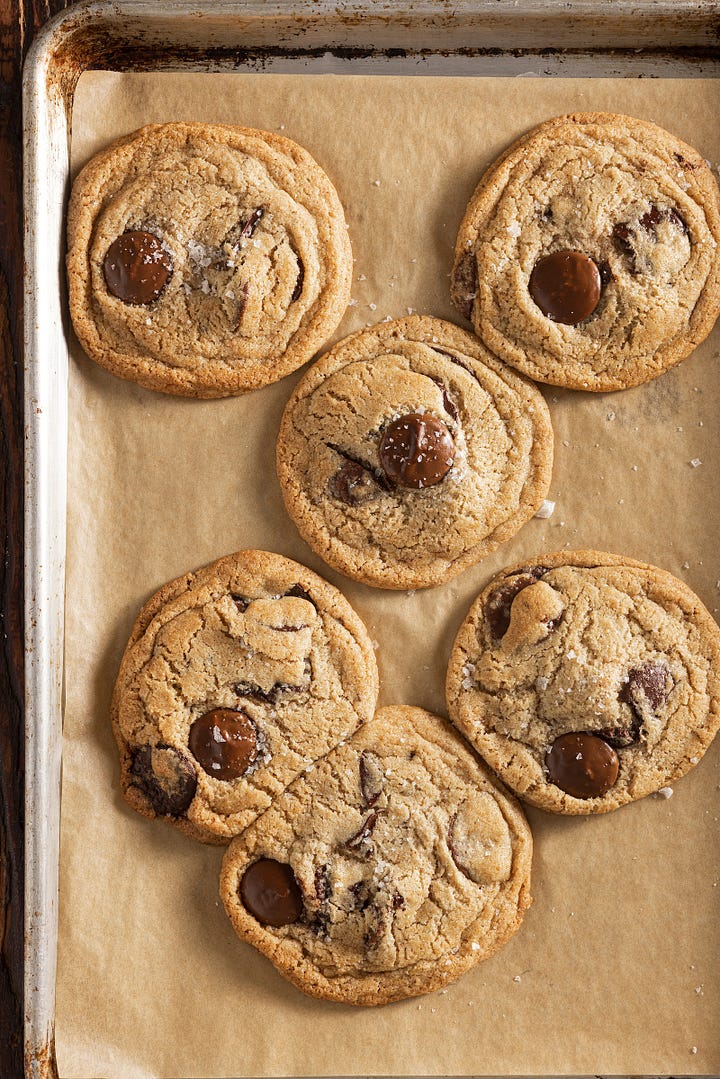
I’d watch her get the pan ripping hot and drop the eggs in one at a time, then gently swirling the pan to let the white run as far as it would go. Different than the eggs at diners and cafeterias, that lacked color and character. It was fast and precise, and everyone else said it was wrong until sometime in the early 2000s when Bon Appetite described a similar method. I called my mother immediately to tell her of her genius and how the world had caught up. She passed away in 2012, so I find myself making them more often.
I keep chickens now because I want my mother’s eggs always. Most of the time, they lay their rainbow-coloured orbs for me to pluck from the coop, but sometimes they go feral, and I must seek treasure hidden in burrows they have created with their feathered bodies among the sage and lavender bushes. It is a far more satisfying hunt than any I ever took part in at Catholic churches every spring as a child. Each egg is different, each shell cracking with unique break lines and sounds. Along with my favorite childhood meals, I use about four dozen eggs a week baking cookies, pies, and cakes. My mother’s egg magic was just for us, I try to spread mine across Los Angeles.
I am still astonished at the infinite possibilities the yolk, egg white and even the shell possesses to build structure and change texture. An extra yolk dropped in cookie batter pulls the dough tighter while keeping the end cookie soft and lofty. Egg whites lift chiffon cakes to dizzying heights, giving them bounce and the ability to absorb in flavored syrups, infused milks and juicy soaks. My greatest love and best vehicle for creative play I owe to eggs – buttercream. Whether Swiss, German or Italian - eggs give me daily chances to write poetry. Heat and the friction of a whisk creating clouds to hold any flavor I can imagine. I dream in buttercream, enriching it with jams, curds, and custards beyond any nostalgia touch point. This is my tender romance before it enrobes the cakes, I lovingly hand off to hopefully make new memories you will cherish.
The last step of any bake day sees all the shells I’ve shattered spread over a sheet tray and baked till brittle. I crush these back into my garden to grow the plants strong and for the chickens to eat replenishing their calcium to make more eggs.
Like love, with an egg, nothing goes to waste.
Rose Wilde, the owner of Red Bread LA, is a pastry chef, recipe developer and author. Her debut book ‘Bread and Roses: 100+ Grain Forward Recipes featuring Global Ingredients and Botanicals’ was published last year. She also publishes recipes and inspiration on her substack ‘Eat More’
Muscat Beaumes de Venise
By Sarah Johnson
For Valentine's Day, I thought it fitting to celebrate this sweet muscat wine, hailing from Beaumes de Venise in France. This exquisite wine is made from the small-clustered, lightly-coloured Muscat de Frontignan grape. These grapes flourish on the steep slopes of the Southern Rhone region, where the village of Beaumes de Venise nestles into the foothills of the Dentelles de Montmirail. In this hot, dry climate, grapes grow amongst olive groves and apricot orchards, and where small, regenerative farms prove that the people of the region have strong connections to the land around them.
Harvested late in the season when sugar levels peak, the grapes undergo a process called mutage. This method introduces higher levels of alcohol to halt the fermentation early, preserving the fruit's natural vivacity. Depending on the winemaker, some Muscat BDV wines feature notes of citrus, while others are redolent of apricots and peaches. However, they all share a beguiling honey-like aroma and a clean acidity that perfectly balances the sweetness.
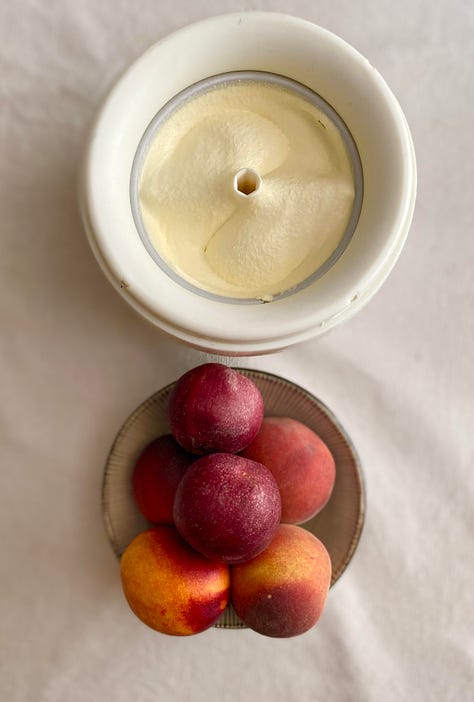
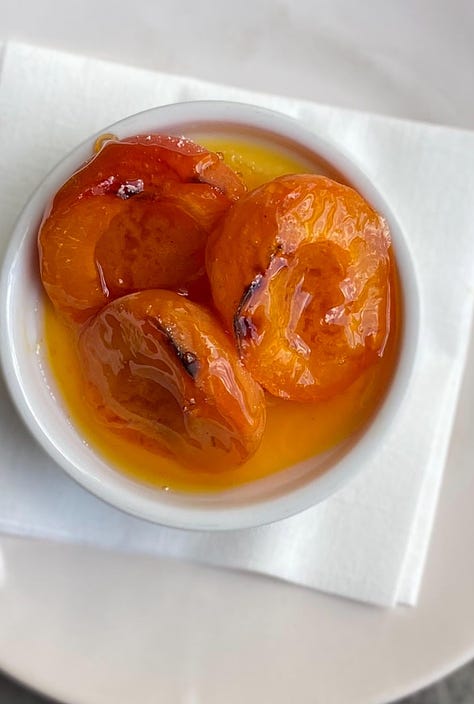
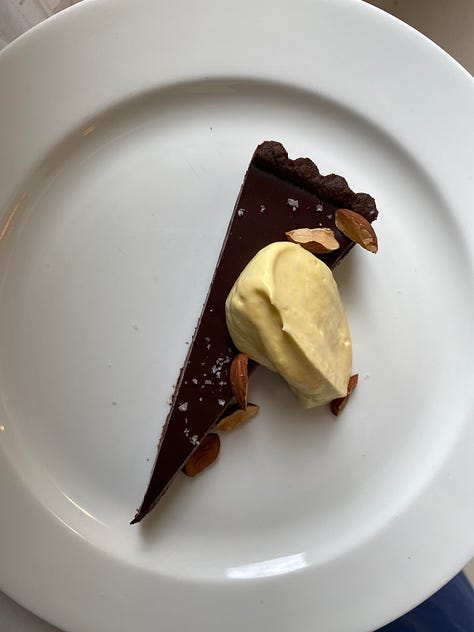
The wine's complex yet harmonious characteristics allow it to pair beautifully with a wide range of flavours. In spring, try making a jelly with rhubarb and Muscat. During the peak strawberry season, serve glasses of this wine with strawberries and gently whipped cream. In summer, why not incorporate it into a sabayon, in place of the traditional Marsala? Pair this with a medley of summer fruits - like peaches and raspberries or plums and blackberries. As autumn arrives, swirl the wine through ice cream to accompany a warm pear and brown butter tart with orange blossom caramel, or serve alongside an apple and quince galette. It also works wonders, drizzled over roasted fruits like rhubarb, apricots, figs, or quince.
This Valentine's Day, elevate your favourite chocolate cake, mousse, or custard by topping it with cream infused with Muscat Beaumes de Venise. To make the cream, pour 200ml of cold double cream into a chilled bowl. Add a tablespoon of sugar, and whip until frothy and slightly thickened. Gently fold in a tablespoon of chilled wine and continue whisking until soft peaks form. For a complementary pairing, consider serving glasses of the wine alongside a medley of dates, fragrant clementines, and walnuts roasted with honey. Alternatively serve it with thin slices of almond frangipane tart adorned with candied orange peel. If you'd prefer to end your meal with cheese, a Muscat Beaumes de Venise will temper a spicy blue, like Roquefort. Serve the Roquefort just below room temperature, with thin slices of walnut bread, a light drizzle of honey and a bottle of Muscat Beaumes de Venise on ice.
For a light, fruity, and visually stunning dessert, fold the Muscat into a smooth mascarpone cream and layer it between a cake made with olive oil chiffon sponge and rhubarb jam. With so many ways to serve, you can see why I have fallen in love with this characterful wine.
Sarah Johnson is an American-born pastry chef who trained under Alice Waters at Chez Panisse in Berkeley, California. She currently oversees the Pastry Development for Spring restaurant, London, and Heckfield Place, Hampshire. Her debut cookbook, Fruitful: Sweet and Savoury Fruit Recipes Inspired by Farms, Orchards and Gardens, is set to be published April 2024. The book is a celebration of fruit, and shows how to source, cook and enjoy fruit throughout the year in both sweet and savoury recipes.
Vinegar
By Clodagh Manning
It comes as a shock to friends and colleagues that although I work in pastry, I do not have a sweet tooth. The desserts I enjoy most have sourness to balance sweetness, lots of texture, and often salt. I don't like to think of pastry as independent of cooking and love bringing pastry methods and ingredients synonymous with savoury cooking. One of my favourite ingredients in that category is vinegar. Unlike citrus, which is at its best during winter only, vinegars are here for us all year long! What I particularly enjoy about vinegars is their direct acidity and, often, potency. They provided so much sharpness with little volume, which is particularly useful in baking, where seasoning is still important, but recipe water content usually can't be interfered with.
In baking, I tend to use vinegar in one of three ways: functionally in pastry making, for enhancing flavours or in situations where vinegar is the predominant flavour, and we want her to be seen and heard! In pastry making, vinegar helps prevent gluten formation (a flaky crust's biggest enemy) and slows the oxidation process, meaning your pastry will maintain maximum flakiness and stay fresh for longer in the fridge. I usually opt for white wine vinegar as I enjoy the mellow flavour, but distilled or apple cider will work, too.
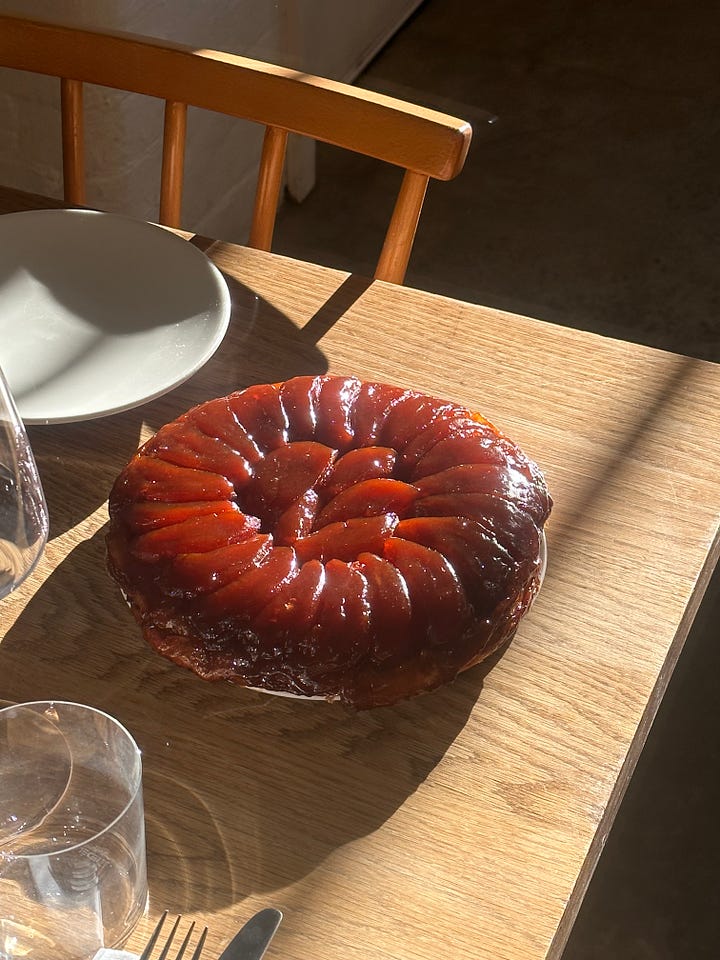
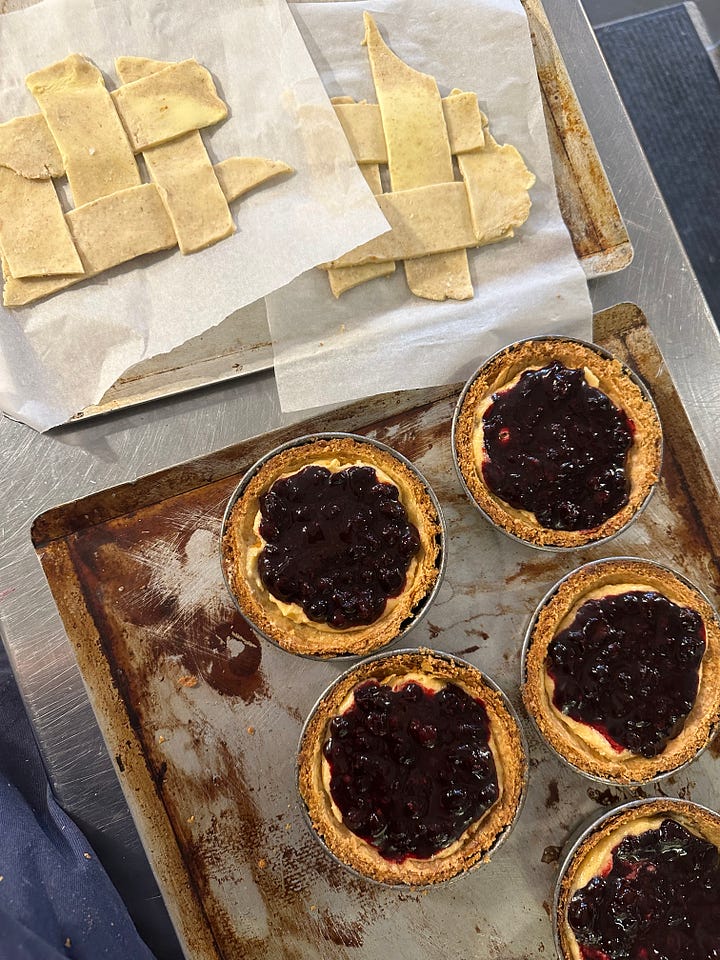
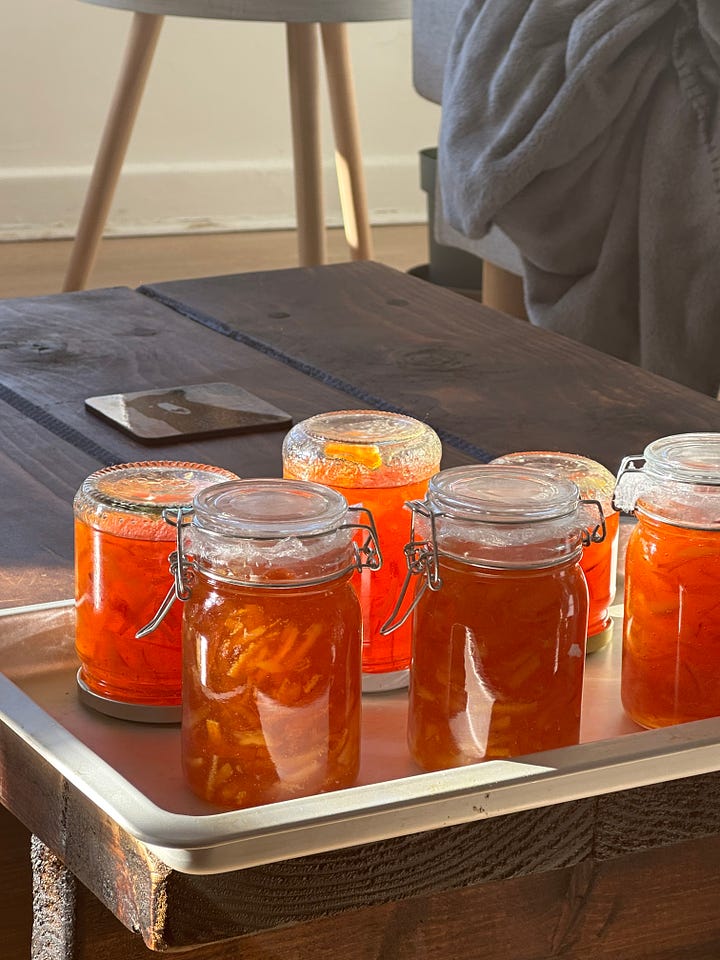
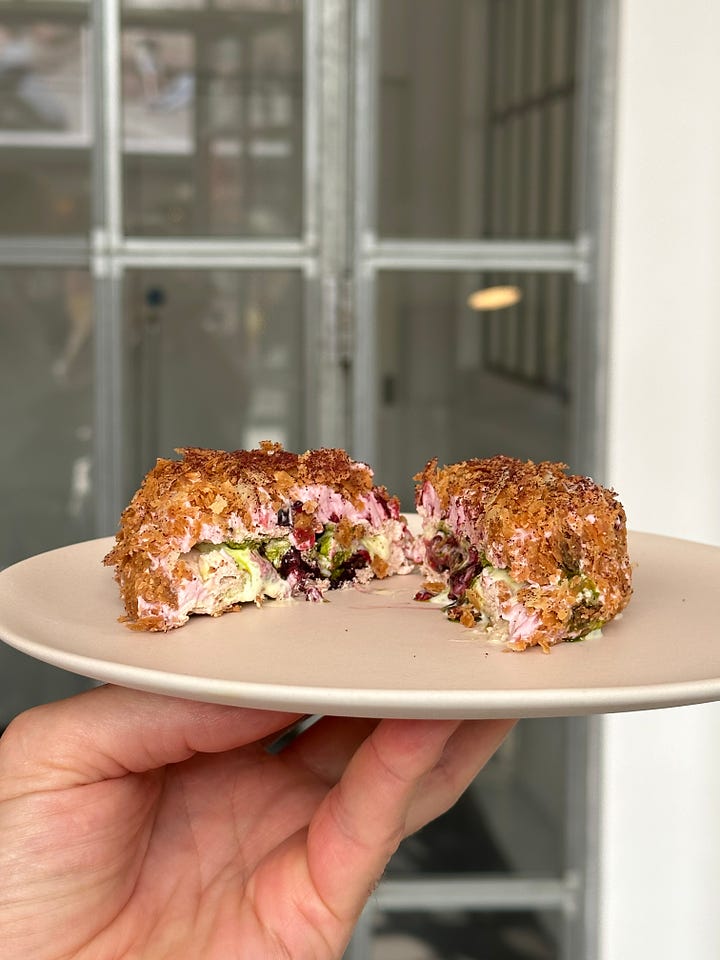
Just like lemon juice, vinegar, when used with care, will brighten fresh fruits and sweet preserves and can be used to build layers of flavour within desserts. While caramelising sugar for a tarte tatin, I will season the caramel with apple cider vinegar. This does two things: it gives the caramel a pleasant tang and intensifies the apple flavour in the dessert. I also enjoy a dash of vinegar as a final addition to marmalade - it helps brighten the flavours of the citrus.
In recipes where vinegar is the centre of attention, I tend to use homemade preparations which have been made using a double-step fermentation process or high-quality vinegar that I've bought and infused with something aromatic. Where one does not have the time or facilities for from scratch vinegar making, we infuse!
I usually opt for white wine vinegar as a base, as the lower acidity leaves room for that desired infused flavour to come through. To make an infused vinegar at home, soak an aromatic of choice - think blackcurrant, fig or lemon leaf, elderflower, or rose in vinegar and cold infuse for 4-6 weeks in a cool, dark place.
In a pinch, vinegar can be heated with aromatics to just below boiling and infuse for a shorter period. My favourite way to use these infused vinegar, and a trick I picked up at my current workplace, is to substitute them for water in an Italian meringue. A lot of sugar is required to make meringue a stable mixture- vinegar helps offset any sickly sweetness and adds interest to your meringue! Nicola has guidance and a recipe for Italian meringue here; just replace all or some of the water with vinegar. Happy baking! I hope that only your meringues are bittersweet this Valentine's!
Clodagh Manning is the pastry chef at Lyles. She started her food career in Dublin working at Library St. Follow her Instagram to keep updated on her desserts and collaborations (I had her dessert at Has Dac Biet @ Oranj last year and it was brilliant!)
Pomegranates
By Marie Havnø Frank
While I love indulging in rich chocolatey desserts during the winter months, I often find myself longing for the bright acidity and floral sweetness of the red summer fruits like raspberries, cherries, red currants and rhubarb.
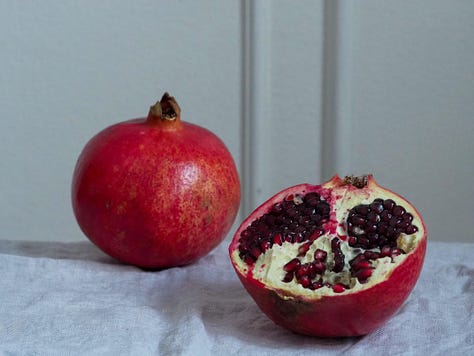
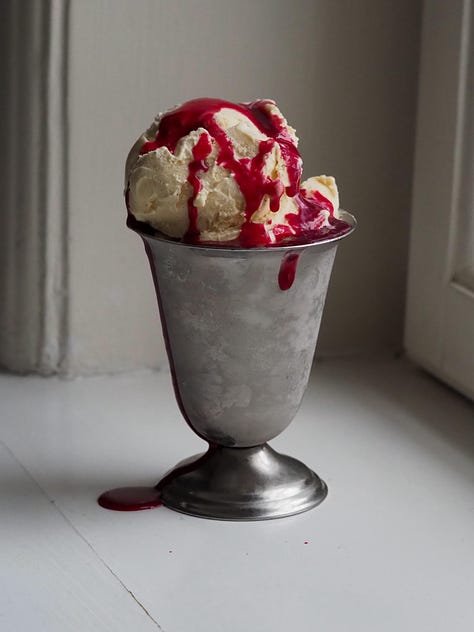
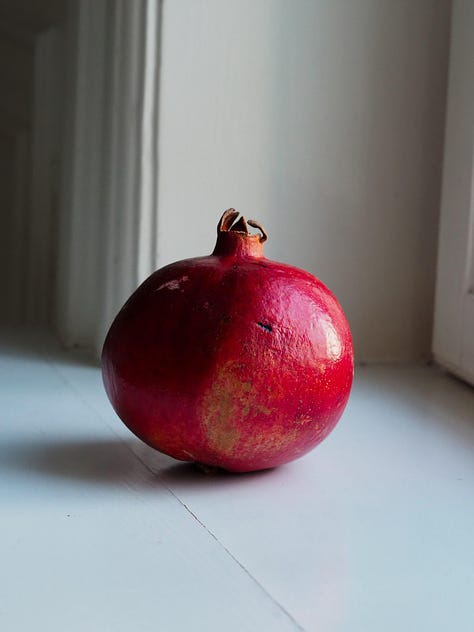
Thankfully, pomegranates are still in season with their vinous, tart and sweet berry flavour. There is something childishly joyful about cutting open the leathery skin and smacking the jewellike seeds out of their nests. Pomegranates were one of the first fruits, alongside figs and grapes, humans cultivated more than 6 thousand years ago in modern-day Iran and Afghanistan. It was a treasured luxury, a revered fruit offered for the gods and served to the elite.
Pomegranates are a symbol of love. They have been associated with fertility, marriage and abundance in ancient cultures from Europe and the Middle East across the Caucasus to the Himalayas. In Sumer, pomegranates were given as offerings to statues of Inanna, the goddess of love, war and fertility - and in Greek mythology, Aphrodite, the goddess of love, pleasure and fertility, planted the first pomegranate tree.
But pomegranates are not just revered for their symbolic meaning, but for culinary purpose. While there are more than 500 varieties, some very sour, some sweet. The varieties most available in markets fall in the middle, perfectly balanced sweetness with a tannic bitterness and bright tartness. The arils – seeds – are sprinkled over sweet and savoury dishes to cut through richness, but the juice is the true MVP.
Slowly reduced to a thick, sour molasses, it is an invaluable condiment and seasoning instead of vinegar. The chilled, fresh juice of a pomegranate on a hot day is nothing short of magical.
Pomegranate juice can be paired with so many other flavours! Bring out the floral aroma of unripe raspberries with crushed pink peppercorns and a splash of rosewater. A scoop of pomegranate sorbet with a slice of walnut cake plays on the shared tannic woodiness. The caramel notes in reduced pomegranate juice means it pairs perfectly with milk chocolate – like a milk chocolate cremeux with a reduced pomegranate maple syrup caramel and almond tuiles.
But my favourite way to use the crimson juice is simply mixed with a little sugar, frozen and scraped into a granita served with a dollop of rose-scented whipped cream or turned into a very simple pomegranate sauce with pink peppercorn and rosewater.
Drizzle it over vanilla ice cream, swirl it into whipped cream and layer it with crushed meringues and poached rhubarb, spread it over a baked cheesecake garnished with pomegranate seeds and segments of blood orange – or simply serve it with yoghurt and granola for breakfast.
Pomegranate sauce
500g pomegranate arils (or 400ml unsweetened, undiluted pomegranate juice)
1 tsp. crushed pink peppercorn (optional)
100g sugar
25g glucose (optional, improves texture but can be substitute with sugar)
60ml water
1,5 tsp. cornstarch
1-2 tsp. rosewater, to taste (optional)
Crush the pomegranates arils to release their juices, and place with the sugar, glucose and peppercorn in a medium saucepan and cook over medium heat, stirring frequently for 10 minutes. Mix corn starch with the water and stir into the pomegranates. Bring to a boil and cook for 2 minutes more.
Pass through a sieve, pressing to extract as much of the liquid. Season to taste with rose water and leave to cool completely in the refrigerator.
Marie Havnø Frank is Copenhagen based pastry chef and consultant. Her Instagram is awe inspiring! You should also sign up to her substack ‘More Than Sweet’ which is a growing treasure trove of recipes, too.





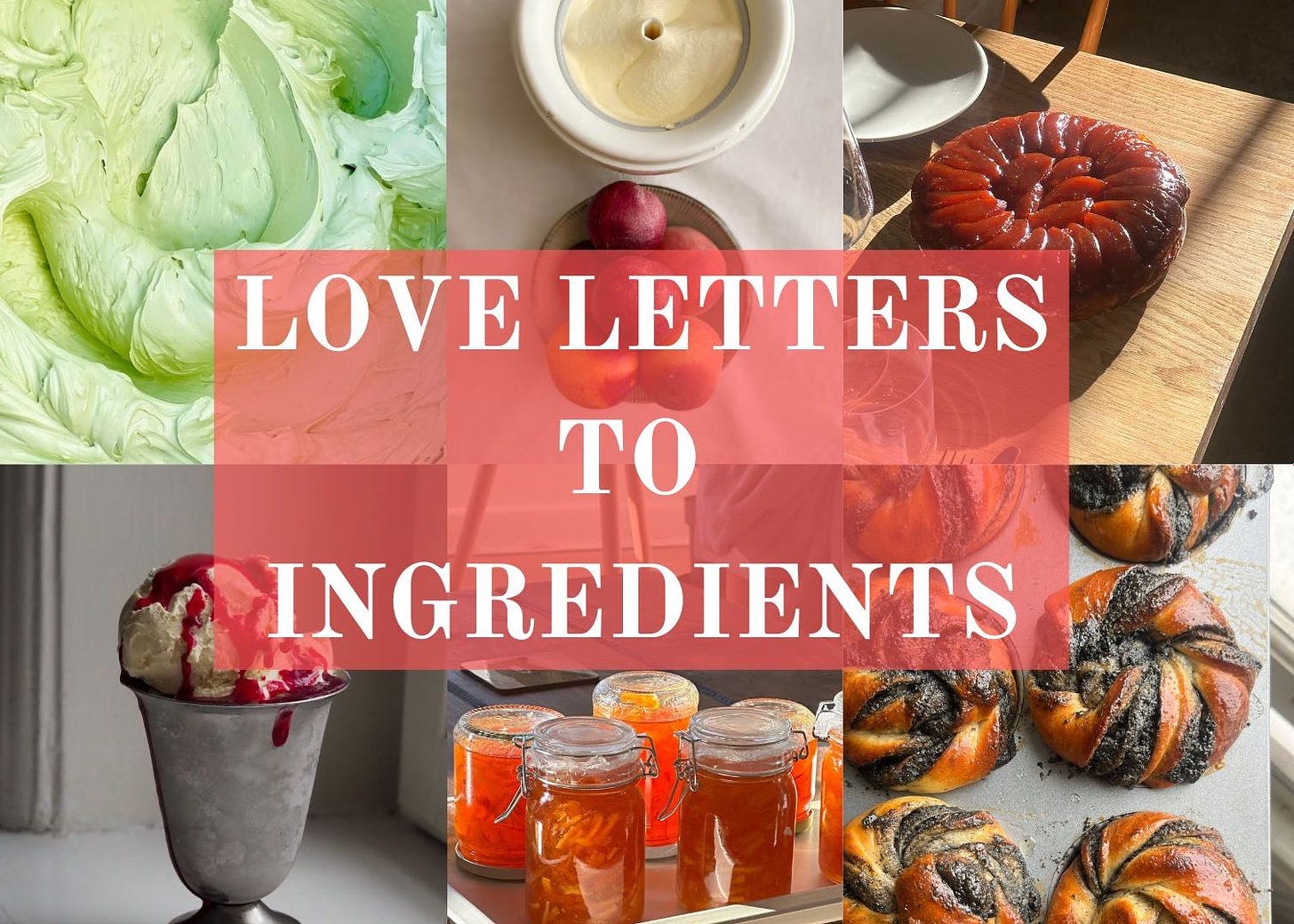
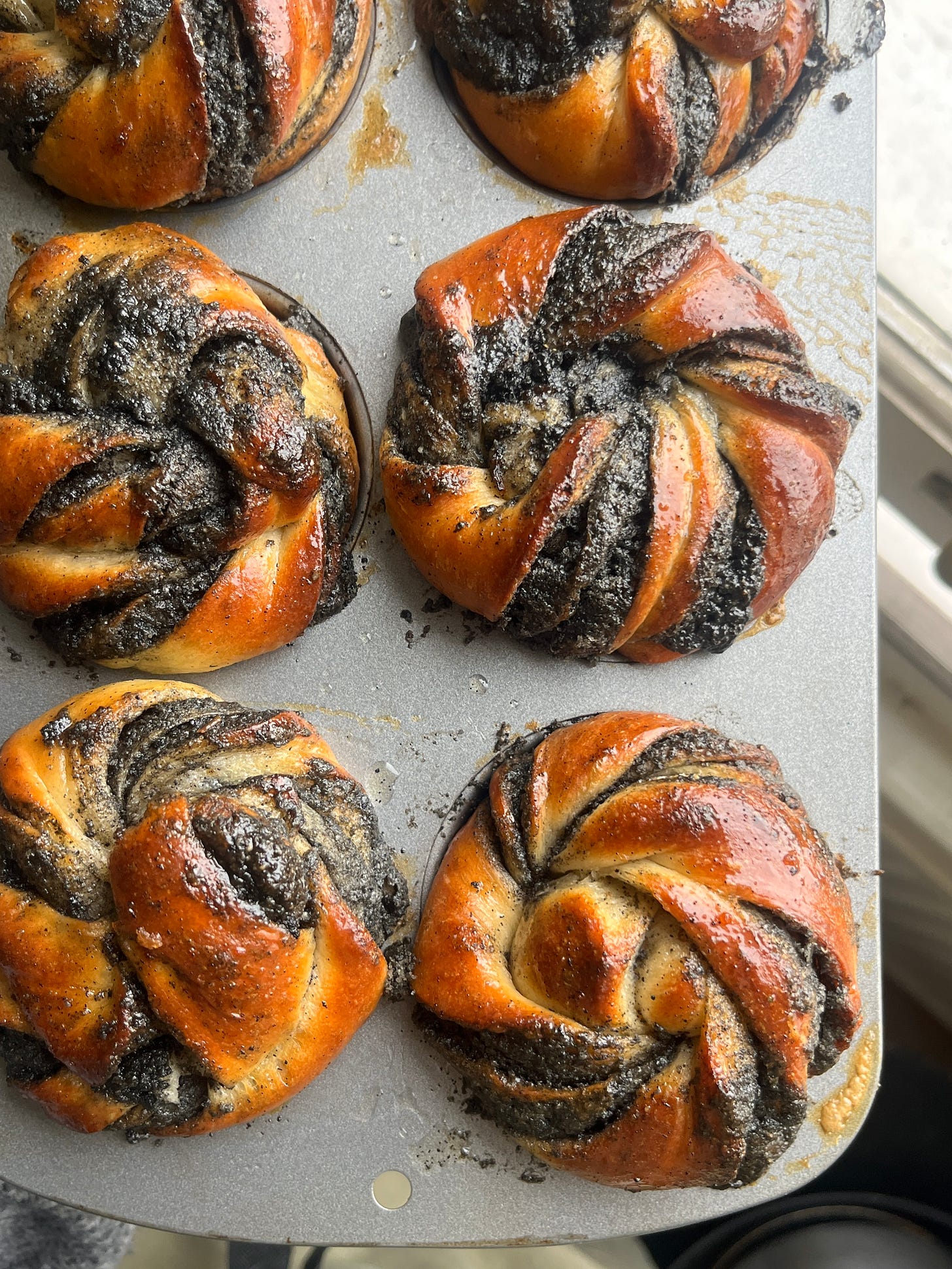
Oh I loved reading this so much! I just published a piece (a love letter) about wild garlic this morning so fitting with theme of love for an ingredient. Can’t wait to try my hand with more black sesame and really related to the section about eggs, mothers and love. Thanks for sharing ♥️
Rose!!! Amazing piece